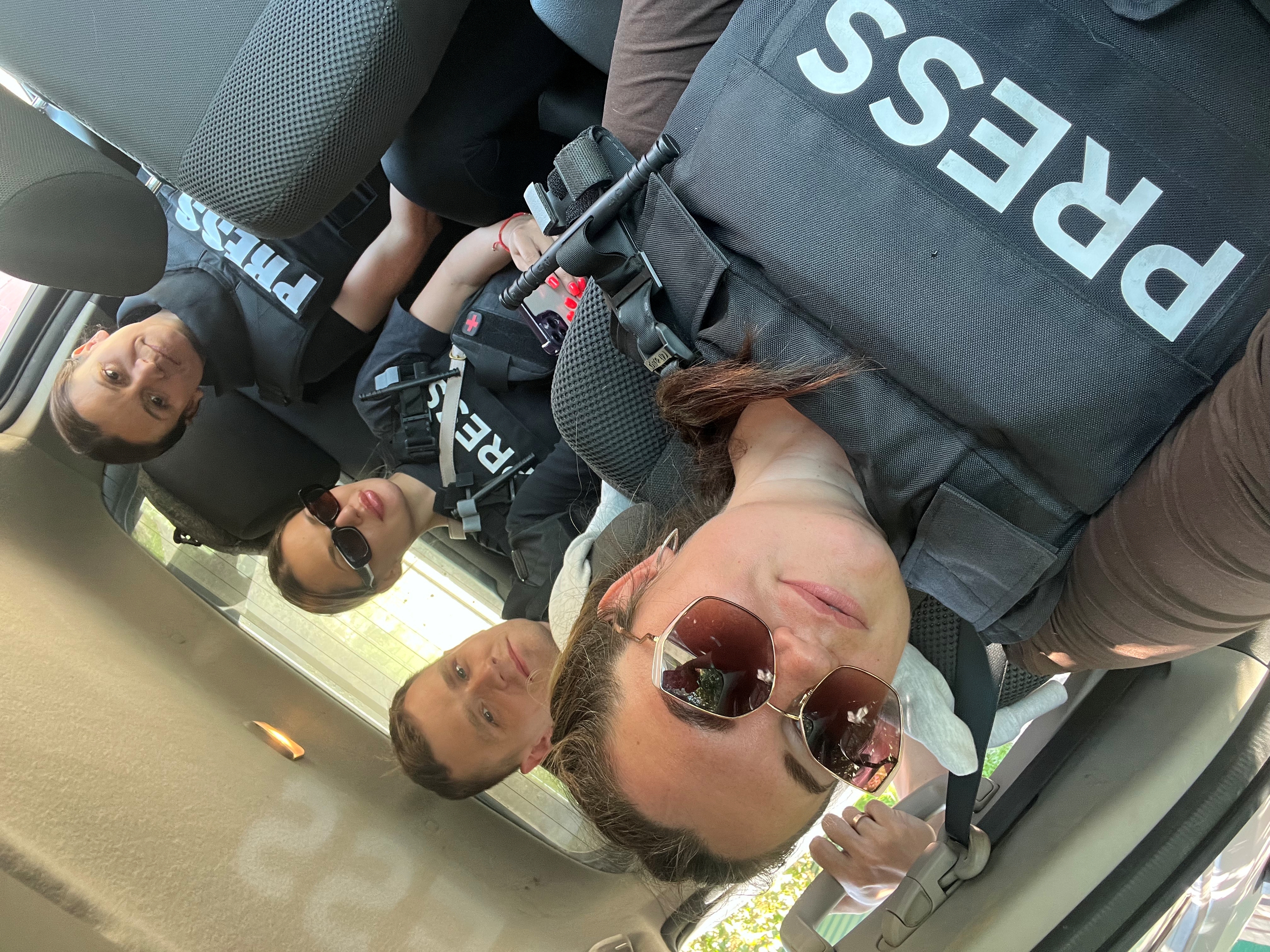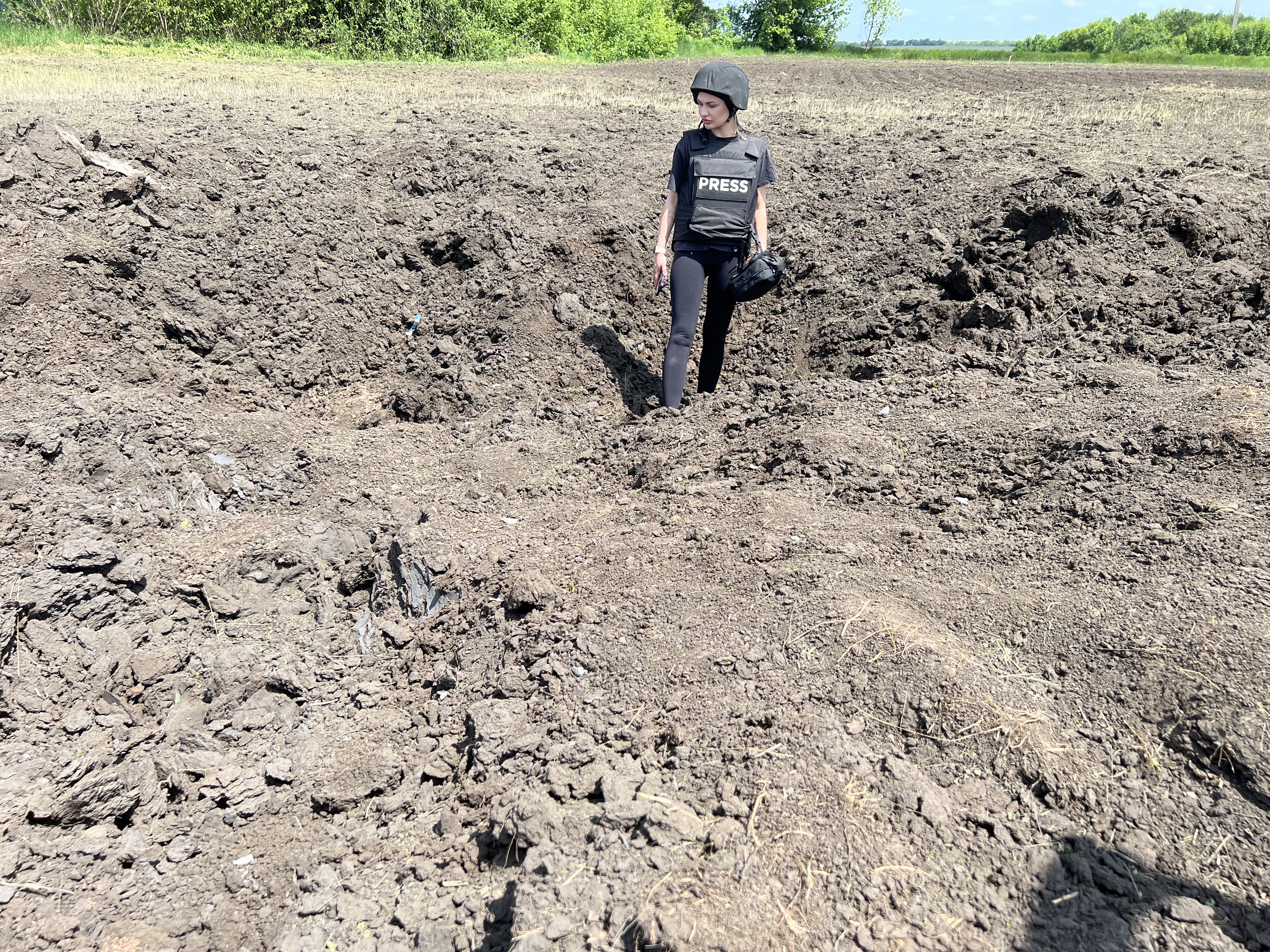At the Edge: Reporting on Life Along the Russian Border
In the beginning of Russia’s full-scale invasion, Ukraine’s Sumy region rarely made national or international headlines despite constant shelling and life under threat from the enemy right next door. In 2023, a group of local journalists launched Kordon [Border] Media to change that. Co-founder Aliona Yatsyna explains how the outlet began as a response to an information vacuum and grew into a trusted source for local communities and major newsrooms.
Was your goal primarily to inform local residents, or were you aiming to reach a broader, even international, audience?
Both. But it wasn’t as complicated as it might sound. We started with quick news updates and tailored content for different audiences depending on the social media platform. Of course, we knew a small regional newsroom wasn’t going to pull in a huge audience, so early on we identified one of our key audiences: journalists from other outlets. Some we already knew; others we just wrote to. We also went to every media event we could. We used every opportunity to connect with the biggest national media. Now we work with all of them. Same with international outlets.
Today, every newsroom knows that, if they need news from Sumy region, they go to Kordon Media. This isn’t about competition anymore. It’s about quality reporting.
Sometimes we work with fixers; sometimes we act as fixers for international reporters. Some need logistics help; some want contacts; some need everything from translation to arranging access. The money we earn from such work goes straight into our media budget.
There were times when we had to put out open calls to colleagues: “Please come here—we’ll show you everything, but we need visibility”. Like in March 2024, when the Freedom of Russia Legion and the Siberian Battalion crossed into Russia from Sumy region. Our community was getting shelled hard and people needed help.
And did journalists respond to that call?
They all came. We worked with them nonstop for about three weeks—every day, helping, guiding, showing them around.
Tell us about your team. You started with four people. What does the newsroom look like now?
We grew from four to six people even before we launched. The six of us worked together for the first six months. At the time, the co-founders didn’t have salaries. Early micro-grants only covered fees for two other teammates and travel expenses.
When we got donor support, we hired a finance director right away and started building a stronger management structure. Now we’re a team of 20. We have a proper newsroom with a data department, six war reporters, a communications lead, a social media marketing specialist. We’re even building a tech team.
In addition to the news, you also have big special projects. Tell us about those.
Our main project—ongoing since the beginning and probably until the war ends—is Life Under Fire. That’s where most of the war reporters’ work goes. It covers everything about civilian life in areas under attack or threat of attack. From the aftermath of shelling to how people run businesses and educate kids in those conditions.
Another key project is Satellite, and more broadly our data team’s work. Using satellite imagery, we show parts of Sumy region we physically can’t access but that need to be seen.
This one has the most security risks and the trickiest communications. First, we had to contact the companies providing satellite images and go through their whole verification process. For a small local newsroom, that was tough. And the images themselves are expensive.
We work closely with the security forces to make sure we don’t accidentally reveal anything sensitive.
That’s why the first articles from that project only came out a year after we started working on it.
There’s also a project showing Sumy’s destroyed cultural and architectural heritage. It’s in 360-degrees video format, so viewers can virtually “walk through” these spaces with the journalist and see how badly the buildings were damaged.
We’ve done smaller projects too, like one about public bomb shelters built with government funds. Another was Kremlin’s Weapons, where we explained what kind of weapons are being used to hit our towns, what they look like, and what they sound like. We update it when new weapons appear.
We did both of these on a volunteer basis. We knew it was important, even if hard to pitch to donors with set timelines and metrics.

What’s your financial situation like now? How dependent are you on donors?
About 30% of the work is fully volunteer-driven. The work that is funded is about 90% covered by donors. The rest comes from community donations, selling our content, freelance reporting, and fixer work for other outlets.
From the start, our five-year plan was to rely on donor support only for projects and development, while covering basic costs ourselves. This year we even considered launching an ad department, but after running the numbers we realized it would cost more than it could realistically bring in right now. This region, being on the front line, with people leaving and businesses relocating, is not the best place for an ad market.
Besides funding, what’s the biggest challenge right now?
Security, without question.
We don’t just travel into frontline areas—we live in them.
That’s why we’re relocating the newsroom. Anyone who can work remotely is being moved—some to Chernivtsi, some to Kyiv. Kyiv isn’t completely safe, of course, but at least there are shelters and alerts are issued earlier and are more accurate.
Our war reporters are staying in Sumy, moving only if the front shifts. We’re also relocating their families so the reporters can focus on work and not worry about their kids.

We had some savings for this, but it’s expensive. And other things come up. A drone hit our colleague’s home—we helped her using newsroom funds. Another reporter lost his car to a drone strike.
What kind of training do your war reporters go through?
The one we repeat the most is medical training. Sometimes it’s civilian courses; sometimes tactical field medicine with military instructors. Our reporters work side by side with the military, so they need those skills. Lately we’ve shifted to individual mentoring when needed.
Honestly, we could probably open our own school soon. Some of our war reporters have been doing this for more than two years. They’ve got a lot to pass on.
One of your reporters was recently in the news for helping a civilian after a shelling. Does that happen often?
We try to avoid stepping in unless it’s absolutely necessary. If there are others nearby who can help, we stay focused on our reporting. But if no one else can, of course we help.
Each of our reporters is a one-person crew: they can provide first aid, film, shoot photos, conduct interviews, drive—whatever is needed. Often they work solo. Even when in pairs, they need to be ready to take over if something happens to their partner. That’s just our policy.
How has your editorial policy evolved over time?
From the beginning, we’ve been writing our policy based on real experience, including our mistakes. And we’ve had a lot of those. The fact that we’re still alive is a miracle. The policy doesn’t change so much as grow. Every time we face a new situation, we add to it. The battlefield keeps evolving, and so does the threat.
Drones, for example, have changed a lot. Or there is the enemy tactic of hitting the same spot twice. There was a time when enemy sabotage groups were kidnapping civilians—that’s when we wrote a whole section on how not to get captured, and what to do if you are.
Our tone of voice has shifted too. At first, our style was more informal. Now it’s more restrained. People experience the war differently. Some of us are used to certain things, but for those just now facing the worst of it this isn’t the time for jokes.
How do you deal with the psychological toll?
Anyone in the team can request mental-health support. Our operations director stays in touch with a few organizations that offer it. We cover ten therapy sessions per person.
We also have unlimited paid leave, and four times a year we go on retreats—taking the team out of the region if possible. Once a year we do an off-site strategy session, where we reflect on the past year and make plans for the next.